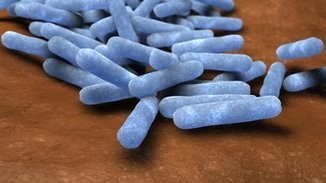The microbes that live in and on our bodies will colonize a human-manned spacecraft to Mars—but will the spacecraft's microbiome be safe?
生活在我们身体内部和表面的微生物能够通过载人飞船到达火星,但是飞船内存在微生物菌群是否安全呢?
撰文/波音 克里斯托弗·因塔利亚塔 (Christopher Intagliata)
翻译 潘磊
校对 郭晓
A humid bathroom is the perfect habitat for mold. But there are ways to avoid it. "We can just open the window and let some fresh air in!" Not so easy on a space station though, as astrobiologist Petra Schwendner of the University of Edinburgh explains.
一个潮湿的浴室是霉菌滋生繁衍的温床。但是我们有办法避免霉菌滋生。“我们只需要打开窗户,让一些新鲜空气进来!”爱丁堡大学的天体生物学家佩特拉·施温德纳(Petra Schwendner)如是说。然而想在太空站上这么做却不那么容易。
"It has been seen on the international space station or on the MIR that these microorganisms can accumulate. I've seen pictures where you could see this corrosion caused by bacteria or an accumulation of fungus behind wet towels."
“在国际空间站或MIR(和平号空间站)上都可以看到这些微生物在一点一点聚集堆积起来。我曾经看到过由细菌引起的腐蚀痕迹或湿毛巾后面聚集的真菌。”
So as we set our sights on Mars, what might grow in the spacecraft—essentially a human-scale petri dish—during the year-and-a-half-long flight?
那么,当我们把目光投向火星时,在长达一年半的航行中,太空船(本质上是一个放大到人类尺度的培养皿)上会长出些什么东西来呢?
The Mars500 habitat in Moscow simulated that trip, with six crew members confined inside. And Schwendner and her team tested microbial samples of the habitat over time. They found what you might expect: a lot of human-related bacteria and fungi, mostly at levels deemed safe for life in space. But they also noticed a decline in microbial diversity over time—which could indicate a less-than-healthy microbial community that’s potentially more prone to takeover by hostile bacteria.
研究者在莫斯科的“火星-500”居住舱模拟了这样一次旅行。舱内搭载六名船员。施温德纳和她的团队检测了居住舱内随时间变化的微生物样本。他们的发现正如你所期待的:在太空中,很多和人类有关的细菌和真菌几乎都在对生命安全的水平。但是他们也注意到,随着时间的推移,微生物种群多样性会下降——这暗示着敌对菌群很可能占领了不太健康的微生物群体。
"Seeing this decrease is for us an important point or proof that continuous monitoring is an important fact and is really required for being able to maintain a healthy environment." The study is in the journal Microbiome. [Petra Schwendner et al., Preparing for the crewed Mars journey: microbiota dynamics in the confined Mars500 habitat during simulated Mars flight and landing]
“对我们来说,观查到这种多样性下降有力地证明了,持续的观测非常重要,而且也是维持一个健康的环境所必需的。”这项研究发表在《微生物菌群》(Microbiome)杂志上。
When we do rocket to the Red Planet, it'll be impossible to keep our spacecraft completely sterile. Humans are leaky animals. The real question might be how we'll keep our many microbes…from colonizing Mars.
当我们搭载火箭去往那颗红色星球时,保持我们的飞船处在完全无菌的状态是不可能的。人类不是密不透风的生物。真正的问题可能是,我们要如何防止这些微生物占领火星。

 京公网安备11010502039775号
京公网安备11010502039775号  京公网安备11010502039775号
京公网安备11010502039775号 
















